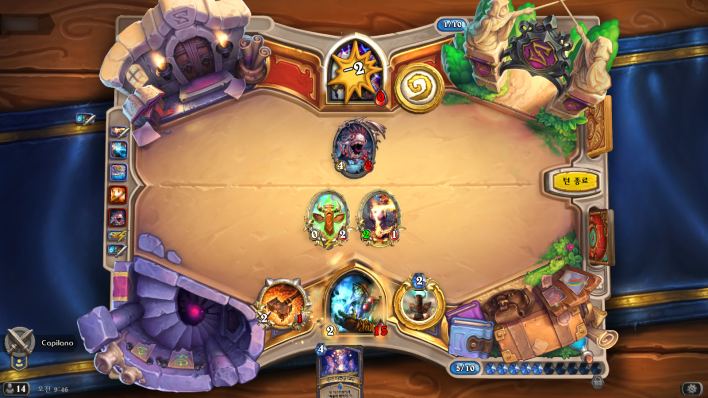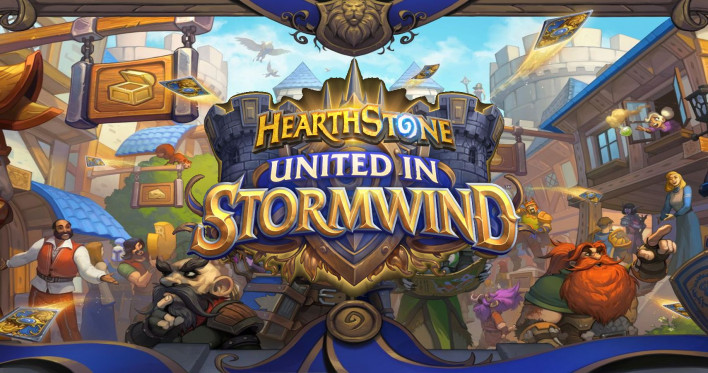
I started playing Hearthstone in 2014, around the time of the official Hearthstone launch. Over the last seven years, I've participated in many different competitions to reputable achievements. In 2018, I won the Tespa Collegiate finals but lost the passion for grinding competitive Hearthstone events soon after.
I continued to casually enjoy Hearthstone until I graduated college in 2020. With schoo no longer a burden, I started to feel the urge to play competitive Hearthstone again. In those three years while I was in college, Hearthstone adapted a new Masters Tour system that required players to either finish top 16 in ranked mode or play open cup qualifiers. I wasn't confident I could get top 16, so I took notice of the open qualifiers.

There were two ways of qualifying to Masters Tours through open cups: win one of the 120 open cups or finish top 8 four times. Either way, I had to play as many opens as possible. I decided to start grinding as soon as the open cup qualifiers start for Masters Tour Silvermoon.
All open cups are scheduled over the weekend so players have four weekdays to decide the decks for their open cup line-up. The open qualifiers use the 3-decks 1-ban best-of-3 rule — a departure from the best-of-5 and best-of-7 standards of 2019 Hearthstone.

Solving the Priest problem
I have to go back to the previous expansion's meta to explain how I chose my lineup. Around May, the Forged in the Barrens meta was focused around Control Priest. Priest was considered as the sole best archetype at the competitive level and a must-bring in any tournament. The few available Priest-counter decks were favored only against Control Priest, and the Priest matchup was not dominant enough to oppress Priest completely. Furthermore, players always prefer aggressive decks more because they are usually faster and cheaper to build. More than 80% of the players played Priest, and almost everyone banned Priest.
On June 3, the Wailing Caverns mini set was released. It was not a meta-changer because it was only a mini-expansion with 35 cards. Control Priest was still considered the best deck in the meta. Decks that were strong before the mini set were still on the top of the meta but there were new archetypes now also. Among those, Deathrattle Demon Hunter and Elemental Shaman were favored against Priest and were overall good decks in the meta but not dominant and therefore not as appealing as original meta decks like Rush Warrior, Miracle Rogue, and OTK Lifesteal Demon Hunter.
Although Priest was undoubtedly a strong deck, it was beatable. Players hated Priest less because of its win rate but because the games against it were unbearable. It's a distressing gameplay for several reasons, including the long duration of the games and the stress that comes from losing to "Created by" cards. And although I also hated playing against Priest, I took this as a chance to take advantage of the meta.

Building line-ups
During the Wailing Caverns meta, almost every lineup had Control Priest and two of Rush Warrior, Miracle Rogue, or Lifesteal OTK Demon Hunter. To counter this meta, I chose to bring decks favored against Control Priest and Lifesteal OTK Demon Hunter by playing Doomhammer Elemental Shaman and Deathrattle Demon Hunter. The core difference from the previous Priest-counter lineups was that Shaman and Demon Hunter could win against other decks even if the opponent wins with Priest or does not play Priest at all.
I struggled around choosing the third deck in the lineup. At first, I played Control Priest myself, assuming that most of my opponents will ban it. However, this was not the best call because my opponents realized that Control Priest's best matchup was my own Priest (50:50) and refused to ban it. Afterward, I switched my third deck to Clown Druid, and later Spell Mage. My win rate with Elemental Shaman + Deathrattle Demon Hunter + Spell Mage lineup was around 60~70%. I got three top 8's and eventually a 1st place, which qualified me to Masters Tour Silvermoon. In Masters Tour Dalaran (played during the Masters Tour Silvermoon qualification period), the lineup with the same three decks and Control Priest had the highest win rate, which proved the success of my lineup.

Winning at Silvermoon
Masters Tour Silvermoon had a completely different meta with the release of United in Stormwind. I was not able to predict the meta because there were piles of playable archetypes in the meta. My strategy for Wailing Caverns was not viable because targeting a specific deck (like Control Priest) is difficult in such a diverse meta. Also, Masters Tours are 4-decks 1-ban (best-of-5), unlike the qualifiers. I wanted to play the four decks with the highest win rates.
However, finding the "best decks" was not as straightforward as there were too many viable decks around the tier 2 zone and most of the decks had polarized matchups. The exceptions were Warlock and Shaman. Warlock was too powerful to be excluded from any lineup. Quest Shaman was not as great as Warlock but was still had potency and had great matchups. Although there were possible target lineups without Warlock and/or Shaman, I was not too fond of them because the meta was too diverse to face similars every round.

The real question was: which two decks are going to take the remaining slots? I tested many different options and collected stats on the possible options. After putting hours into thinking about the best lineup, I came to these conclusions:
- This tournament will have the most diverse meta ever.
- Warlock is the best class in this meta and also has two different archetypes.
- Therefore, it is not possible to target the most popular class in the meta.
- I want to play the best decks with the least polarizing matchups (with Warlock ban)
Taking these into account, I considered Quest Hunter, Fel Demon Hunter, Garrote Miracle Rogue, Handbuff Paladin, and Aggro Druid. At first, I considered playing Quest Hunter and Fel Demon Hunter because they were good decks on average and slightly favored against Quest Shaman, the second-best class in the meta. However, I decided to drop Quest Hunter and Fel Demon Hunter due to the increasing popularity of Celestial Druid and Fel Demon Hunters.
Afterward, I tested Handbuff Paladin. Most of the players, including myself, did not consider Paladin to be playable at all due to the recent nerf to Conviction and Battleground Battlemaster. However, on my playtesting with other competitive players, Handbuff Paladin turned out to be a great deck with non-polarizing matchups when Warlock is banned. (Even now, most of the players don't consider Paladin as a real class, but I believe it is one of the best decks in the current meta.)
The fourth deck was a real struggle. I wasn't able to find a powerful deck that has an even matchup spread. By the day of the Masters Tour, I had to make guess about the tournament meta and play whatever deck fit best into that. My last guess was that there would be many combo-based decks due to the sudden increase in popularity of Brute Demon Hunter the day before the Masters Tour. Therefore, I decided to play Aggro Druid, which had a good average win rate, less polarizing matchups, and ис favored against combo decks.

How the meta turned out
Most of my meta guesses were correct. The meta was very diverse. There were so many different decks that it was difficult to find two other players with the same four archetypes. Also, there were a considerable number of Brute Demon Hunters. I was pleased to see the lineups at the beginning of the tournament. However, my result was tragic. I could not even finish in the top half of the tournament.
Here were the problems:
- The meta was so diverse that even though combo lineups, including Brute Demon Hunter, were popular, they were less than 30% of the field.
- I underestimated the amount of anti-aggro lineups.
- I did not get matched into the favorable lineups in the field.
- Unlucky RNG overall (as always).
The main reason why I chose Aggro Druid as the fourth deck was because I assumed players would avoid anti-aggro lineups, which will get destroyed by Brute Demon Hunter lineups. Although there were many Brute Demon Hunter lineups, many players still played anti-aggro regardless. I only guessed half of the meta correctly. In the end, Aggro Druid became the worst deck in my lineup.
In hindsight, I should not have played Aggro Druid because it was my worst deck. However, I believe that this is consequentialism. This Masters Tour was so diverse that this was the first time all 10 classes were represented in the top 16. The Stormwind champion, jiuqianyu, played Brute Demon Hunter. The former champions and the best ladder players, xBlyze and Gaby, brought a similar lineup but dropped in the first few rounds going 0-2 and 1-2. If I had matched against different lineups, the results could have been different.
Variance is also a consideration. As always, RNG exists in Hearthstone. Although I can't blame everything on RNG, there were objectively unfortunate moments throughout the series.
For example, my first two rounds were against Monsanto and Fr0zen, two of the best America Grandmasters. Against game 5 of Fr0zen, I played Aggro Druid against his Fel Demon Hunter. I almost closed out the series, but Fr0zen dealt 30-damage lethal from 0 cards in hand. Here, I am not saying that Fr0zen's strategy was wrong but he highrolled me to steal my win. In fact, Fr0zen is an amazing player and finished the swiss round with a perfect 8-0 score. The point is that if I were slightly luckier, I would have won with Aggro Druid, and the story would have been very different.

The tricky part of reviewing is objectively reflecting on the tournament to learn from mistakes and make for a better future. If I blame RNG too much, I will make the same mistakes repeatedly without any improvements. However, if I think that every loss is due to my own mistakes, I could take correct strategies or plays as mistakes.
In this tournament, the RNG part of my failure was not facing favorable matchups in the field. However, I could have increased the chance by not underestimating the number of anti-aggro lineups. Although I guessed correctly that more people would play Brute Demon Hunter, that does not mean that every other player will think the same and avoid lineups that lose to Brute Demon Hunter.
After all, I don't regret my strategy as I believe that the lineup was the best guess I could have made. It is always best to set your own goals and values and believe in them. If not, the regrets can last long and affect your future tournaments. Always try to come to a conclusion you like, play your best, and objectively evaluate the results for improvements.



Sort by:
Comments :0